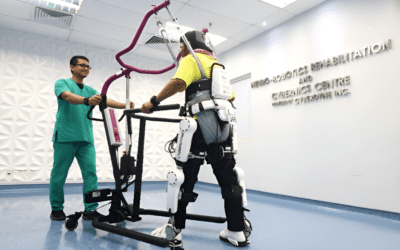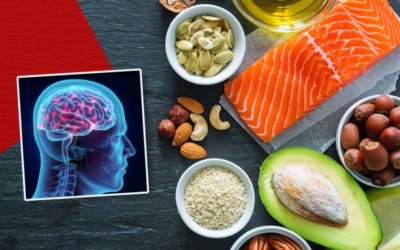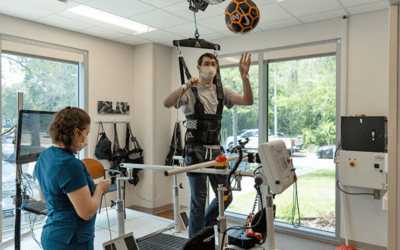Chronic pain significantly impacts daily life, often hindering mobility and overall well-being. Innovative rehabilitation devices, such as transcutaneous electrical nerve stimulation units, robotic exoskeletons, and biofeedback systems, play a vital role in pain management and recovery. These devices can enhance mobility, provide targeted relief, and promote physical activity, helping individuals regain independence and improve their quality of life.
What is Chronic Pain?
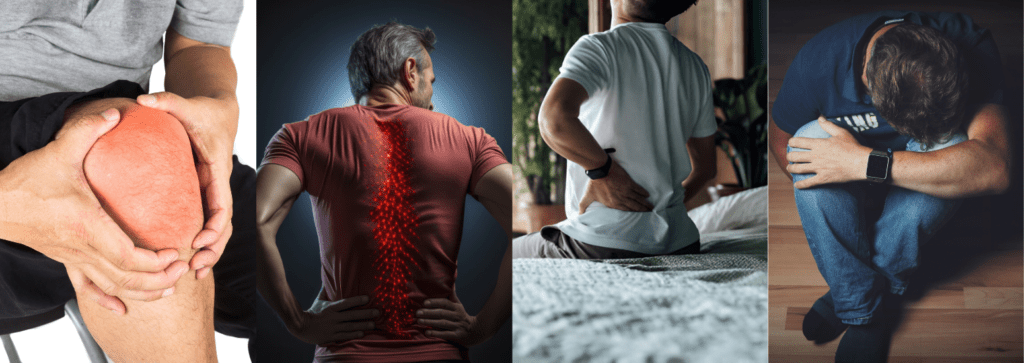
Chronic pain is defined as pain that persists for longer than three to six months, often continuing beyond the typical healing time of an injury. It can arise from various causes, including:
- Injury or Surgery: Pain that continues after an injury has healed or following surgical procedures.
- Medical Conditions: Chronic pain is associated with conditions such as arthritis, fibromyalgia, neuropathy, and back pain.
- Nerve Damage: Conditions that affect the nervous system, such as multiple sclerosis or postherpetic neuralgia, can lead to persistent pain.
- Psychological Factors: Emotional and psychological issues, including depression and anxiety, can exacerbate the perception of pain.
Neurological conditions that cause Chronic pain
Several neurological conditions can lead to chronic pain, often due to nerve damage or dysfunction in the nervous system. Here are some key conditions associated with chronic pain:
1. Multiple Sclerosis (MS)
- Description: An autoimmune disease that affects the central nervous system, causing damage to the myelin sheath around nerve fibers.
- Chronic Pain: Patients may experience neuropathic pain, muscle spasms, and pain related to mobility issues.
2. Fibromyalgia
- Description: A condition characterized by widespread musculoskeletal pain, fatigue, and tenderness in specific areas.
- Chronic Pain: Fibromyalgia is often accompanied by chronic pain that can be widespread and varies in intensity.
3. Neuropathy
- Description: Damage to the peripheral nerves, often due to diabetes, infections, or physical trauma.
- Chronic Pain: Neuropathy can cause burning, tingling, or shooting pain in the affected areas.
4. Postherpetic Neuralgia
- Description: A complication of shingles caused by the reactivation of the varicella-zoster virus.
- Chronic Pain: Patients experience severe pain in the area where the shingles rash occurred, persisting long after the rash has healed.
5. Complex Regional Pain Syndrome (CRPS)
- Description: A chronic pain condition usually following an injury, characterized by severe pain, swelling, and changes in skin color.
- Chronic Pain: CRPS can lead to debilitating pain that is often disproportionate to the initial injury.
6. Chronic Migraines
- Description: A neurological condition characterized by recurring headaches, often accompanied by nausea, sensitivity to light, and other symptoms.
- Chronic Pain: Frequent migraines can lead to chronic headache disorders, impacting daily life.
7. Cervical and Lumbar Radiculopathy
- Description: Conditions where nerve roots in the neck or lower back are compressed or irritated, often due to herniated discs or spinal stenosis.
- Chronic Pain: Can cause radiating pain, numbness, or weakness in the arms or legs.
Chronic pain resulting from neurological conditions can significantly affect a person’s quality of life, making effective management essential. A multidisciplinary approach that includes medication, physical therapy, and psychological support can help alleviate symptoms and improve overall functioning for individuals with these conditions.
Steps to reduce chronic pain – Neurological Rehabilitation
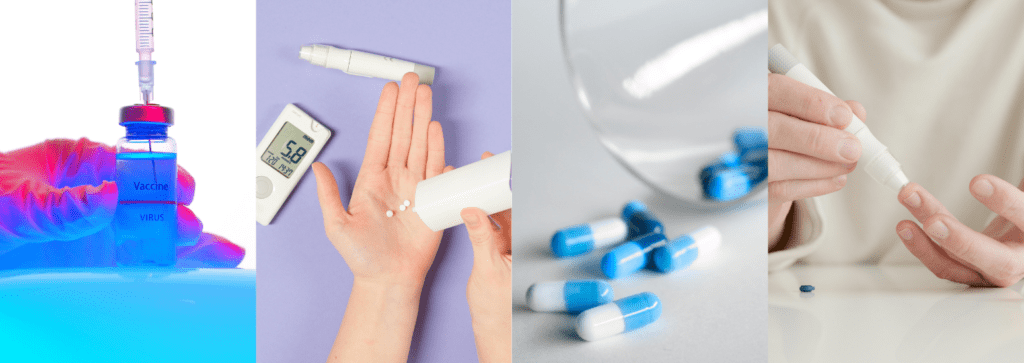
Here are some effective steps to help reduce chronic pain:
1. Consult a Healthcare Professional
- Work with doctors, physical therapists, or pain specialists to create a personalized pain management plan.
2. Medication Management
- Use prescribed medications, including analgesics, anti-inflammatories, or neuropathic pain medications, as directed by a healthcare provider.
3. Physical Therapy
- Engage in physical therapy to improve strength, flexibility, and mobility, which can help reduce pain and enhance function.
4. Regular Exercise
- Incorporate low-impact activities like walking, swimming, or yoga to improve physical fitness and reduce pain perception.
5. Mindfulness and Relaxation Techniques
- Practice mindfulness, meditation, or deep breathing exercises to help manage stress and improve mental well-being.
6. Healthy Lifestyle Choices
- Maintain a balanced diet, stay hydrated, and ensure adequate sleep to support overall health and pain management.
7. Cognitive Behavioral Therapy (CBT)
- Consider CBT or other therapeutic approaches to help change negative thought patterns and develop coping strategies for managing pain.
8. Alternative Therapies
- Explore alternative treatments like acupuncture, chiropractic care, or massage therapy for additional pain relief.
9. Heat and Cold Therapy
- Apply heat packs or cold compresses to affected areas to help alleviate pain and reduce inflammation.
10. Limit Stress
- Identify stressors in your life and adopt stress-reducing strategies, such as time management or relaxation techniques.
Implementing these steps can significantly help in managing chronic pain and improving overall quality of life. It’s important to approach pain management holistically and seek guidance from healthcare professionals to tailor a plan that best suits individual needs.
Medical devices for chronic pain management – Neurorehabilitation
Medical devices for chronic pain management are designed to help alleviate pain and improve the quality of life for individuals suffering from various conditions. Here are some key devices commonly used:
1. Transcutaneous Electrical Nerve Stimulation (TENS) Units
- Function: Deliver low-voltage electrical impulses to the skin to stimulate nerves and reduce pain perception.
- Uses: Effective for conditions like arthritis, fibromyalgia, and lower back pain.
2. Implantable Pain Pumps
- Function: Deliver medication directly to the spinal fluid through a catheter, allowing for targeted pain relief.
- Uses: Often used for severe chronic pain, such as in cancer patients or those with complex pain syndromes.
3. Spinal Cord Stimulators
- Function: Implanted devices that send electrical impulses to the spinal cord, altering pain signals before they reach the brain.
- Uses: Commonly used for neuropathic pain, failed back surgery syndrome, and chronic pain conditions.
4. Peripheral Nerve Stimulation Devices
- Function: Small pulse generators are implanted near specific nerves to provide electrical stimulation that interrupts pain signals.
- Uses: Helpful for conditions such as chronic migraines, post-surgical pain, and diabetic neuropathy.
5. Biofeedback Devices
- Function: Measure physiological functions (like muscle tension and heart rate) and provide real-time feedback to help individuals learn pain management techniques.
- Uses: Often used in conjunction with relaxation techniques for chronic pain conditions.
6. Cryotherapy Devices
- Function: Apply cold therapy to reduce inflammation and numb painful areas.
- Uses: Beneficial for acute injuries and chronic conditions like arthritis.
7. Heat Therapy Devices
- Function: Provide soothing warmth to relax muscles and alleviate pain.
- Uses: Effective for muscle pain, menstrual cramps, and joint stiffness.
8. Ultrasound Therapy Devices
- Function: Use sound waves to promote tissue healing and reduce pain and inflammation.
- Uses: Commonly utilized in physical therapy for soft tissue injuries and chronic pain.
9. Electrical Stimulation Devices
- Function: Devices like Functional Electrical Stimulation (FES) help stimulate muscles and nerves to improve mobility and reduce pain.
- Uses: Useful for conditions that involve muscle atrophy or weakness, such as after a stroke.
Chronic pain management through medical devices provides a range of options for individuals seeking relief. These devices can significantly enhance pain management strategies, offering targeted treatment that can improve daily functioning and overall quality of life. Always consult healthcare professionals to determine the most appropriate device based on specific pain conditions and individual needs.
By integrating technology into rehabilitation, patients can better manage their pain and restore a sense of normalcy in their lives, paving the way for a more active and fulfilling future.

